#rpg combat techniques
Explore tagged Tumblr posts
Text
Fitting Martial Arts into your Palladium Megaverse game
Discover how to blend martial arts into any Palladium Megaverse setting! 🥋 Our video guide dives deep into integrating combat skills that will bring your RPG to life. 🌐 Join the adventure! #PalladiumRPG #MartialArts
Ninjas & Superspies Step into the vast realms of the Palladium Megaverse, where martial arts breathe life into every corner of your adventures. This video offers a detailed overview of fitting various martial arts into any setting within the Palladium Books universe, from the gritty streets of Rifts to the mystical lands of Fantasy. Enhance your campaigns with expert tips on incorporating…
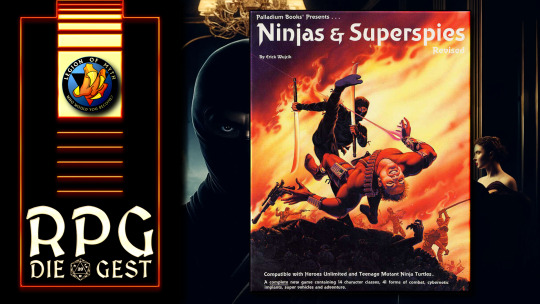
View On WordPress
#character skills rpg#legion of myth#martial arts in gaming#martial arts rpg#megaverse campaigns#megaverse settings#ninjas & superspies#ninjas and superspies review#ninjas in rpgs#Palladium Books#Palladium Fantasy#palladium game tutorials#palladium megaverse#palladium rpg strategies#Palladium universe#role-playing game guides#role-playing games#rpg character development#rpg combat techniques#rpg game design#rpg game mechanics#superspies game#tabletop combat#tabletop gaming tips#tabletop RPG
1 note
·
View note
Text
🎮✨ Dive into the thrilling mission "Powder Smoke at the Castle" in Rise of the Ronin! Our latest guide is filled with tips on how to impress Jules Brunet, defeat challenging enemies, and make the best choices to build crucial relationships. Get ready to lead the shogunate soldiers with confidence!
#Rise Of The Ronin#Powder Smoke At The Castle#Gaming Guide#Video Game Tips#Edo Castle#Mission Walkthrough#Jules Brunet#Combat Strategies#Game Objectives#Level 24 Mission#Action Adventure#PS5 Games#PC Gaming#Game Mechanics#French Military Techniques#Boss Fight Tips#Character Development#Video Game Lore#Game Tactics#Role Playing Games#Choosing Wisely#Gaming Community#Strategy Guide#Mission Preparation#Edo Period#Samurai Games#Gaming Moments#Player Interactions#Game Development#RPG Gameplay
1 note
·
View note
Text
ISAT and Ludonarrative Harmony: Combat is a Storytelling Tool
Or: How Siffrin is stuck in the endgame grind, forever
Please Note: This is primarily aimed at an audience that already played In Stars and Time, because I am bad at explaining things, and it's good to already know what the fuck I'm talking about. I tend to only bring up game elements as I want to talk about them.
Spoilers for.... all of ISAT! Especially Act 5!
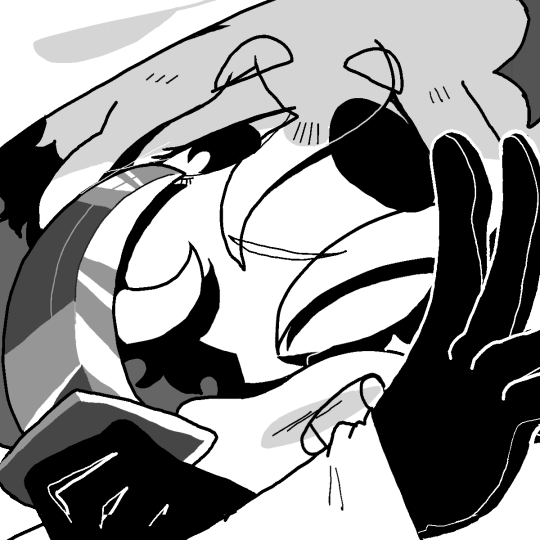
(image to show how i feel posting this and as an attention grabber over my wall of text)
To pull a definition of ludonarrative harmony out of a hat, game writer Lauryn Ash defines it as follows:
Ludonarrative harmony is when gameplay and story work together to create a meaningful and immersive experience. From a design implementation perspective, it is the synchronized interactions between in-game actions (mechanics) and in-world context (story).
It is, generally speaking, how well game mechanics work hand in hand with the story. I, personally, think ISAT is an absolute masterclass of it, so I want to take a look at how ISAT specifically uses its battle system to emphasize Siffrin's character arc and create organic story moments. I want you to keep this in mind when I talk here.
So, skills, right? If you've played any turn-based RPG, you know your Fire spells, your "BACKSLASH! AIRSLASH! BACKSLASH!" and the many ways to style those.
Well, what does casting "Fire" say about your character? Not all that much, does it? Perhaps you'll have typical divisions. The smart one is the mage, the big brawny one is your tank, the petite one's the healer. And that's the barebones of ISAT's main party, but it's much more than that.
Every character's style of combat tells you something about them. Odile, the Researcher, is the most well-travelled and knowledgable of the bunch. She's the one with the expertise to keep a cool head and analyze the enemy, yet also able to use all three of the Rock-Paper-Scissors craft types.
To reflect her analytical view of things, all her skill names are just descriptive, the closest to your most bog-standard RPG. "Slow IV" or "Paper III" serve well to describe their purpose. The high number of the skills gives the impression there were three other Slow skills beforehand - fitting, considering the party starts at level 45, about to head into the final dungeon. She's also the oldest, so she's the slowest of the bunch.
Isabea, the Fighter, has all his skills in exclamation points. "YOUR TURN!!!" "SO WEAK!!!" "SMASH!!!" they're straightforward, but excited. He's a purposefully cheerfull guy, so his skills revolve around cheering on his allies. He's absolutely pumped to be here, and you see that from his skill names alone.
Mirabelle, the Housemaiden, is an interesting case. She's by all means the true protagonist of this tale - She's the one "Chosen by the Change God," the only one who survived the King's first attack, the only one immune to his ability to freeze time, the only dual-craft type of the game - just a lot of things. And her skill names reflect that facade she puts on herself - she can do this, she can win! She has to believe it, or else she starts doubting. This is how you get "Jolly Round Rondo" and "Mega Sparkle Heal" or "Adorable Moving Cure." She's styled every bit a sailor scout shojo heroine, and her moveset replicates the naming conventions of "In the name of the moon, I'll punish you!"
Even Bonnie, the Kid, who can't be controlled in combat, has named craft skills. And they very much reflect that Bonnie is, well, a kid. "Wolf Speed Technique" or "Thousand Blows Technique" are very much the phrasings of a child who learned one complicated word and now wants to use it in everything to seem cooler than they are, which is none, because they're twelve.
Siffrin's skills are all puns.

You have an IMMEDIATE feel for personality here. Between "Knife to Meet You!" and "Too Cleaver by Half," you know Siffrin's the type to always crack a joke no matter the situation, slinging witticisms around to put Sonic the Hedgehog to shame. It's just such a clever way to establish character using a game mechanic as old as the entire history of RPGs.
This is only the baseline of the way the combat system feeds into the story, though.
The timeloop, of course, feeds into it. Siffrin is the only character who retains experience upon looping, whereas all other characters are reset to their base level and skills. And it sucks (affectionate).
You're extremely likely to battle more often the earlier in the game you are - after all, you need the experience (for now.) Every party member contributes, and Siffrin isn't all that strong on their own, since they focus on raw scissor type damage with the addition of one speed buff. (Of course it's a speed buff. They're a speedy fucker. Just look at him).
At first, the difference in level between Siffrin and the rest of the group is rather negligible. Just a level or two. Just a bit more speed and attack. And then Siffrin grows further and further apart. Siffrin keeps learning new skills. He gets a healing skill that doubles as an attack boost, taking away from both Mirabelle's and Isabeau's usefullness. He gets Craft skills of every type that even give you two jackpot points instead of one - thus obliterating Odile's niche. Siffrin turns into a one-person army capable of clearing most encounters all on their own.
Siffrin's combat progression is an exact mirror of story progression - as their experience inside the loops grows, they also grow further and further away from their party. The party seems... weaker, slower, clumsier. Always back at their starting point, just as all of their character arcs are reset each loop. Never advancing, always stagnant. And you have Siffrin as the comparison post right next to them.
I also want to point out here a change from Act 2 to Act 3 - Siffrin's battle portrait. He stops smiling.

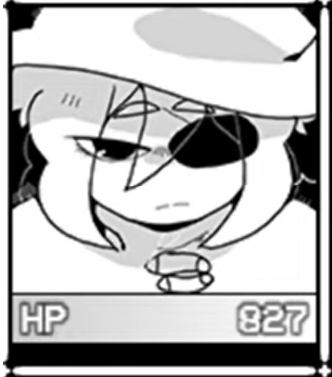
Battles keep getting easier. This is true both for the reason that Siffrin keeps growing stronger even when all enemies stay the same, but also for the reason that you, the player, learn more about the battle system and the various encounters, until you've learned perfect boss clear strategies just from repetition. Have you ever watched a speedrunner play Pokemon? They've played this game so many times, they could do it blindfolded and sleeping. Your own knowledge and Siffrin's new strength work in tandem to trivialize the game's entire combat system as the game progresses.
(Is it still fun? Playing it over, and over, and over again? Is it?)
You and Siffrin are in sync, your experience making everything trivial.
As time goes on, Siffrin grows to care less and less about performing right for their party and more and more about going fast. A huge moment in his character is marked by the end of Act 3; because of story events I won't delve too deeply into, Siffrin has grown afraid of trying something new. And his options of escape are closing in. They need an answer, and they need it fast. He doesn't have the time or patience to dumb himself down, so you unlock one new skill.
It doesn't occur with level up, or with a quest, or anything at all. At the start of Act 4, it simply appears in Siffrin's Craft skills.
(Just attack.)
No pun. No joke. Just attack. Once you notice, the effect is immediate - here you have it, a clear sign of how jaded Siffrin has become, right at every encounter. And it's a damn good attack, too! The only available attack in the game that deals "massive" damage against all enemies. Because it doesn't add any jackpot points (at least, it's not supposed to), you set up a combo with everybody else, but Siffrin simply tears away at the enemy with wild abandon. Seperated from the rest of the party by the virtue of no longer needing to contribute to team attacks (most of the time. It's still useful if they do, though).
Once again, an aspect of the battle system enhances the degree of separation between Siffrin and the static characters of his play. You're incentivized to separate him, even.
Additionally, there are two more skills to learn. They're the only skills that replace previous skills. You only get them at extremely high levels, the latter of which I didn't even reach on both of my playthroughs.
The first, somewhere in the level 70 range, Rose Printed Glasses, a paper type craft skill, is replaced by Tear You Apart. It's still a pun about paper, but remarkedly more vicious.
The second is even more on the nose. At level 80, In A While, Rockodile!, a rock type craft skill, is replaced by the more powerful Rock Bottom.
I didn't get to level 80. If you do, you pretty much have to do it on purpose. You have to keep going much longer than necessary, as Siffrin is just done. And the last skill he learns is literally called Rock Bottom.
What do I even need to say, really.
Your party doesn't stay static forever, though.
By doing their hangout quests, side quests throughout the loops that result in Siffrin and the character having a heart to heart, all of them unlock what I'd call an "ultimate" skill. You know the type - the character achieved self-fulfillment, hit rank 10 on their confidant, maxed out their skill tree, and received a reward for their trouble.
These skills are massively useful. My favorite is Odile's - it makes one enemy weak to all Craft types for several turns, which basically allows you to invalidate the first and third boss, as well as just clown on the King, especially once Siffrin starts racking up damage.
But the thing is. In Act 3, when you first get them, yeah, they're useful. But... do you need them? After all, they're such a hassle to get. You need to do the whole character quest again, you can't loop forward in the House or you'll lose them. If you want to take these skills to the King, you need to commit. Go the full nine-yards and be nice to your friends and not die and not skip forward or skip back. Which is annoying, right?
Well, I sure did think so during Act 4. After all, a base level party can still defeat the King, just with a few more tricky pieces involved. Siffrin can oneshot almost all basic enemies by the time of Act 4. It's this exact evalutation that you, the player, go through everytime you return to Dormont. Do I want this skill, still? Would it not be faster to go on without it? I'm repeating myself, but that's the thing! That's what Siffrin is thinking, too!

I also want to take a quick moment to note, here - all skills gained from hangouts have art associated with them, which no other skills do. This feature, the nifty art, hammers home these as "special" skills, besides just how they're unlocked.
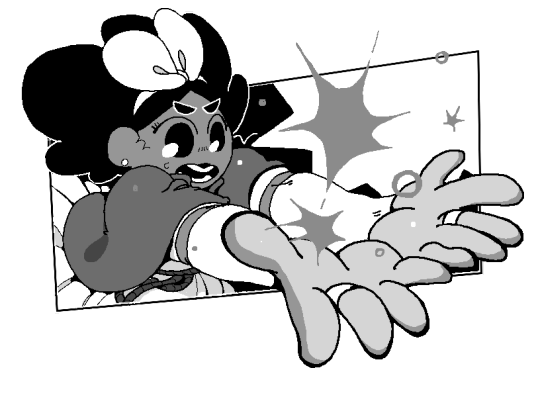
Siffrin also has one skill with associated art.
Yeah, you guessed it, it's (Just attack.)
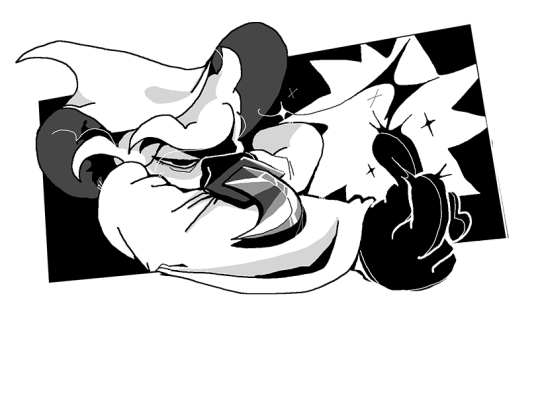
At first, helping the characters is tied to a hefty in-game reward, but that reward loses its value, and in return devalues helping Siffrin's friends every loop. It's too tedious for a skill that'll make a boss go by one turn faster. You, the player, grow jaded with the battle system. Grinding experience isn't worth it, everybody's highest levels are already recorded. Fighting bosses isn't worth it, it's much faster to loop forward.
Isn't this what all endgame in video games looks like? You already beat the final boss, and now... what challenge is left? Is there a point to keep playing? Most games will have some post-game content. A superboss to test your skills against, but ISAT doesn't have any of that. You're forever left chasing to the post-game. That's the whole point - to escape the game.
As most games get more difficult as time passes, ISAT only gets easier. The game becomes disinterested in expanding its own mechanics just as I ran out of new things to fight after 100%-ing Kingdom Hearts 3. Every encounter becomes a simple game of "press button to win."
The final boss just takes that one up a notch.
Spoilers for Act 5 ahead boys!
In Act 5, Siffrin utterly loses it. His last possible hope for escape failed him, told him there's nothing she can do, and Siffrin is trapped for eternity. So of course, they go insane and run up the entire House without their party.
This just proves what you already knew - you dont need the party to proceed. Siffrin alone is strong enough. And here, Siffrin has entirely shed the facade of the jokester they used to be. Every single skill now follows the (Just attack.) naming conventions. Your skills are: (Paper.) (Rock.) (Scissors.) (Breathe.)
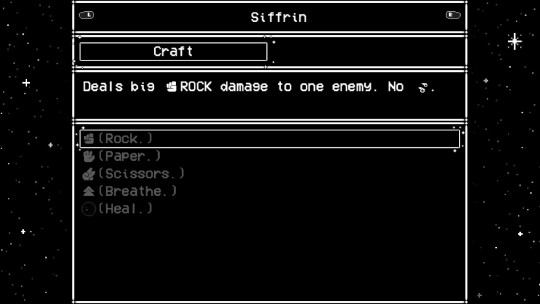
To the point. Not a moment wasted, because Siffrin can't take a moment longer of any of this. Additionally, his level is set to 99 and his equipment becomes fixed. You can't even pick up items anymore! Not that you needed them at this point anyway, right? Honestly, I never used any items besides the Salty Broth since Act 2, so I stopped picking items up a long time ago. Now you just literally can't.
Something I've not talked about until now - one of the main equipment types in this game are Memories, gained for completing subquests or specific interactions and events. They all by and large have little effects - make Odile's tonics heal more, or have Mirabelle cast a shield at the start of combat. For the hangout events, you also gain an associated memory that boosts the characters' stats by 30. It lets them keep up with Siffrin again! A fresh wind! Finally, your party members feel on par with you again!
...For a time. And just like that, they're irrelevant again, just as helping them gave Siffrin a brief moment of hope that the power of friendship could fix everything.
In Act 5, your memory is set to "Memory of Emptiness." It allows you to loop back in the middle of combat. You literally can't die anymore. Not that Siffrin could've died by this point in the first place, unless you forgot about the King's instant-kill attack. This one memory takes away the false pretense that combat ever had any stakes. Siffrin's level being set to 99 means even the scant exp you get is completely wasted on them. All stakes and benefits from combat have been removed. It has become utterly pointless.
Frustrating, right? It's an artistic frustration, though. It traps you right here in Siffrin's shoes, because he hates that all these blinding Sadnesses are still walking around just as much. It all inspires just a tiny fraction of that deep rolling anger Siffrin experiences here in the player.
And listen, it was cathartic, that one time Siffrin snapped and stabbed the tutorial Sadness, wasn't it? Because who enjoys sitting through the tutorial that often? Siffrin doesn't. I don't, either.
So, since combat is an useless obstacle now meant to inspire frustration, what do you do for a boss? You can't well make it a gameplay challenge now, no. The bosses of Act 5 are an emotional challenge: a painful wait.
First, Siffrin fights the King, alone. This is already nervewracking because of one factor - in every other run, you need Mirabelle's shield skill, or else you're scripted to die. You're actually forced to fight the King multiple times in Act 3, and have to do it at least once in Act 4, though you'll likely do it more. Point is: you know how this fight works.
You know Siffrin's fight is doomed from the outset, but all you can do is keep slinging attacks. Siffrin is enough of a powerhouse to take the King's HP down, what with the healing and buff skills they have now, not to even mention you can just go all in on damage and then loop back.
(And no matter which way you play it, whether you just loop or use strategically, it reflects on Siffrin, too. Has he grown callous enough not even death will stop their mission? Or does he still avoid pain, as much as he can?)
This fight still allows you the artifice of even that much choice, not that it matters. The other shoe drops eventually - Siffrin becomes slower, and slower. Unsettling, considering this game works on an Action Gauge system. You barely get turns anymore. The screen gets darker, and darker. Until Siffrin is frozen in time, just as you knew he had to be, because you know how this encounter works, know it can't be cleared without Mirabelle.
And, then, a void.
Siffrin awakens to nothingness. The only way to tell you've hit a wall is if Siffrin has no walking animation to match your button inputs. You walk, and walk, until you're approached by.... you. The next enemy encounter of the game, and Siffrin's absolute lowest point: Mal Du Pays.

Or, "Homesickness," in english. If you know the game, you know why it's named this, but that's not the point at the moment.
Thing is, where you could damage the King and are damaged in turn, giving you at least a proper combat experience, even if its doomed to fail, Mal Du Pays has no such thing.
You can attack. You can defend. But it is immune to all attacks. And in return, it does nothing. It's common, at least, for undefeatable enemies to be a "survive" challenge, but nope. The entire fight is "press button and wait." Except, remember the previous fight against the King? The entire time, you were waiting for the big instant death attack to drop. That feeling, at least for me, carried forward. I was incredibly on edge just waiting for the other shoe to drop. And, as is a pattern, Siffrin is, too. As Siffrin's attacks fail to connect, they start talking to Mal Du Pays.
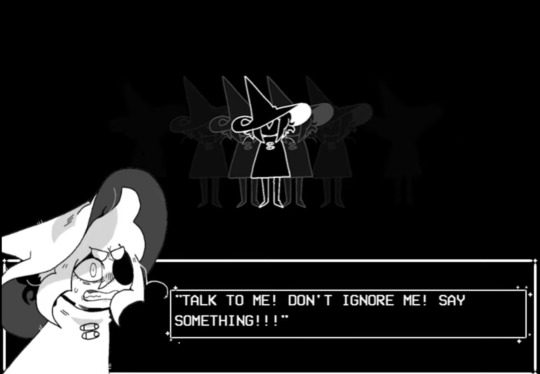
But he gets no response, as you get no attacks to strategize around. The wait for anything to happen is utterly agonizing. You and Siffrin are both waiting for something to happen. This isn't a fight. It just pretends to be. It's an utter rugpull, because Siffrin was so undefeatable for most of Act 4 and all of Act 5 so far. It's kind of terrifying!
and it does. It finally does something. Ma Du Pays speaks, in the voice of Siffrin's friends, listing out their deepest fears. I think it's honestly fantastic. You're forced to just sit here and listen to Siffrin's deepest doubts, things you know the characters could not say because it references the timeloops they're all utterly unaware of. This is all Siffrin, talking to himself. And all you, all Siffrin, can do, is keep wailing away on the enemy to no effect whatsoever.
So of course this ends with Siffrin giving up. What else can you do?
And then Siffrin's friends show up and unfreeze them and it's all very cool yay. The pure narrative scenes aren't really the main focus but I want to point out here:

A) Mirabelle is in the first party slot here, referencing how she's the de facto protagonist, and Bonnie fills in the fourth slot left empty, which shows all characters uniting to save Siffrin
B) this is the only instance of the other party members having act specific battle icons: they're all smiling brightly, further pushed by the upbeat music
C) the reflecting shield Mirabelle uses to freeze the King uses a variation of her hangout skill cut in, marking it as her true "final" skill and giving the whole fight a more climatic feeling.
It's also a short gameplay sequence with Siffrin utterly uninvolved in the battle. You can't even see them onscreen. But... it feels warm, doesn't it? Everybody coming together. Siffrin doesn't have to fight anymore.
At last, the King is defeated. Siffrin and co. make for the Head Housemaiden, to have her look at Siffrin's sudden illness. Siffrin is utterly exhausted, famished, running a fever. And this isn't unexpected - after all, their skills in Act 5 had no cooldown. For context, instead of featuring any sort of MP system, all skills work on a cooldown basis, where a character can't use it for a certain number of turns. The lowest cooldown is actually Siffrin's Knife to Meet You, which has a cooldown of 1. In universe, this is reasoned as the characters needing a break from spamming craft in order to not exhaust themselves.
Siffrin's skills in Act 5 having no cooldown/being infinitely spammable isn't a sign of their strength - it's a sign that he refuses to let himself rest in order to rush through as fast as possible.
Moving on, Siffrin panics when seeing the Head Housemaiden, because seeing her means one thing: the end. Prior to this in the game, every single time you beat the King, the loop ends when you talk to the Head Housemaiden.
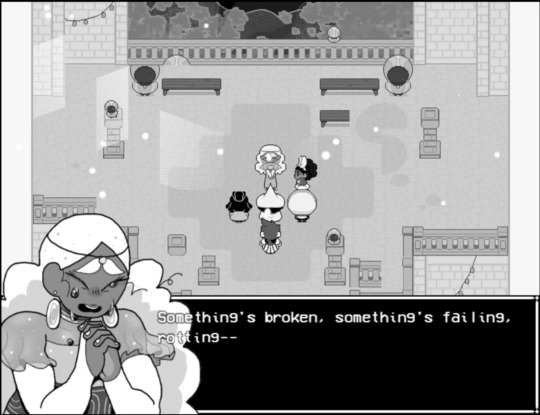
Reality breaks down, the whole shebang. It's here that Siffrin realizes - they don't want the loops to end, because the end of their journey means their family will leave, and he'll be alone again. The happiest time of his life will be over.
Siffrin goes totally ballistic, to say the least.
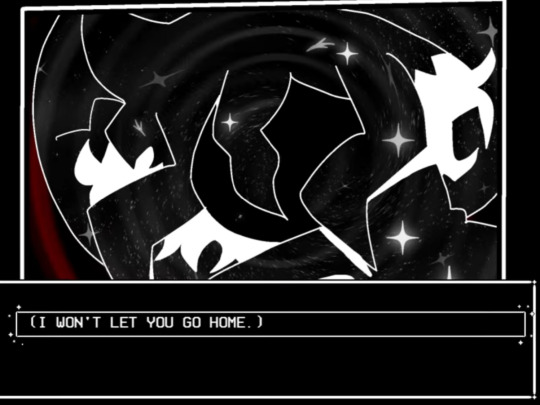
As it turns out (and was heavily foreshadowed narratively), Siffrin has been using Wish Craft to subconciously cause the timeloop because of their abandonment issues. It's rather predictable if you paid attention to literally anything, but it's extremely notable how heavily Siffrin is paralleled to the King, the antagonist they swore to kill by themself at the start of Act 5. The King wants to freeze Vaugarde in time because it is, in his mind, "perfect," for accepting him after he lost his home - a backstory he shares with Siffrin.
Siffrin has become the exact antagonist he swore to kill, and it's shown by how the next fight utterly flips everything on its head.
Siffrin is the final boss.

In a towering form made of stars, Siffrin looks down at their friends. His face is terrified, because of his internal conflict; he can't hurt his friends, but he can't let them go, either. The combat prompt is simply changed to "END IT!"
This fight is similar to the previous, in that you just need to wait a certain number of turns until its over. However, this time, it's not dreadful suspense. It's... confusion, and hesitance.
You have two options for combat: Attack your friends, or attack yourself.
And... you don't really want to do either, I think. I certainly don't. But what else can you do? It's Siffrin's desires clashing in full force. Attack your friends, and force them to stay? Or attack yourself, and let them go safely without you?
Worth noting, here - when you attack Siffrin's friends, you can't harm them. Isabeau will shield all attacks. And when you attack yourself, Mirabelle will heal you back to full. And the friends don't... do anything, either. How could they? Occasionally, Mirabelle heals you and Isabeau shouts words of motivation, but the main thing is...
(Your friends don't know what to do.)
None of them want to harm Siffrin. Both sides simply stare at each other, resolute in their conviction but unwilling to end it with violence. It's of note that this loop, the last one, is the only loop where the King isn't killed. Just frozen. And now here is Siffrin, clamoring for the same eternity the King was. Of course everything ends in a tearfilled conversation as Siffrin sees their friends won't leave him, even after the journey ends, but I still have to appreciate this moment.
Siffrin is directly put in the position with their friends as his enemies, forced to physically reckon that keeping them in this loop is an act of violence, against both their friends, and against himself.
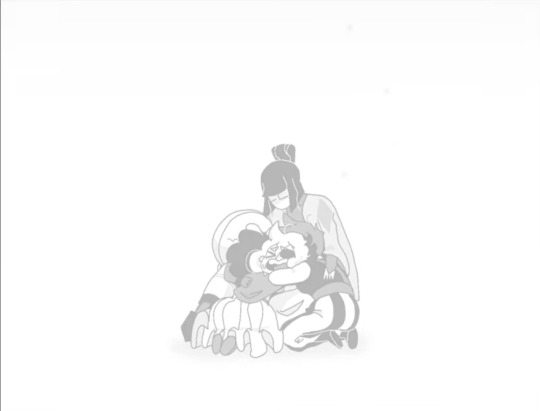
It's a happy ending. But... what does it mean?
Of course, ISAT is obviously about the fear of change. Siffrin is afraid of the journey ending, and of being alone. However, ISAT is also a game about games. Siffrin is playing the same game, over and over, because it's comforting. It's familiar. It's nice, to know exactly what happens next. These characters might just be predictable lines of dialogue, but... they feel like friends. Have you ever played a game, loved it, put countless hours into it, but you never finished it? Because you just couldn't bear to see it end? For the characters to leave your life, for there to be a void in your heart where the game used to be?
After all, maybe it became part of your routine! You play the game every day, slowly chipping away at it for weeks at a time. For me, I beat ISAT in four days. It utterly consumed me during this time. I had 36 hours of playtime by the end. Yeah, in that week, I did not do much more than play ISAT.
And once i beat it, i beat it, again. I restarted the game to see the few scenes I missed, most specifically the secret boss I won't talk about here. I... couldn't let go of the game yet. I wanted to see every scrap I could. I still do. I'm writing this, in part because I still do. It's scary to let go.
Ever heard the joke term of "Postgame Depression?" It's when you just beat a game, and you're suddenly sad. Maybe because the ending affected you emotionally and you need to process the feelings it invoked, or you search for something that can now fill your time with it gone.
The game ends, for real this time, the last time you talk to the Head Housemaiden. But Siffrin gets... scared. What if everything loops back again? And so, his family offers to hold his hand. They face the end, together.
For all loops, including the ending, you never see what happens after. After they leave the loop for good. Because the loop is the game itself. It's asking you to trust that life goes on for these characters, and it holds your hand as it asks you to let go. There's a reason for Siffrin's theater metaphors. He is the actor, and the director, asking everyone to do it over one more time. He's a character within the game, and its player.
There's a reason I talked about endgame content. This, the way it all repeats, there's nothing new, difficulty and stakes bleed away as you snap the game over your knee - it's my copy of White 2 with two hundred hours in it. It's me playing Fire Emblem Awakening in under 3 hours while skipping every cutscene. Are you playing for the sake of play, for the sake of indulging in your memories, because you're afraid of the hole it'll leave when you stop?
Of note: the narrative never condemns Siffrin for unwittingly causing their own suffering. He's a victim of circumstance. It's seen as endearing, even, that Siffrin loves their friends to the point of rather seeing the world destroyed than them gone. But Siffrin is also told: we'll stay with you for now, but we'll part ways eventually. And one day, you'll have to be okay with it.
Stop draining the things you love of every ounce of enjoyment just because you're afraid of what happens next. I'm not saying to never play your favorite games again. Playing ISAT a second time, I still had a lot of fun! I saw so many new things I didn't before, and I enjoyed myself immensely, reading the same dialogue over and over. But... it makes me look at other games I love and still play, and makes me ask... is this still fun? Do I still need to play this game to enjoy it? Even writing this is an afterimage of my enjoyment, but it's a new way to interact with the game, to analyze it through this lens. Fuck, man, I write fanfiction. Look at me.
All of this, fanart, fanfic, analysis, is a way to prolong that enjoyment without making yourself suffer for it. Without just going through the motions of enjoyment without actually experiencing any. But one day, the thing you love won't be fun to talk and write and draw about. And it's okay. You'll have new things to love. I promise.
In the end.... I'm certain I'll replay ISAT one day. Between great writing, art, puzzles and unresolved mysteries, it's my shoe-in for game of the year.
But I won't replay it for quite some time. I've had enough, for now, so I let my love take other forms.
Siffrin is never condemned, because love is no evil. Be it love for another person, or for a game. And please, if you're overempathetic - it's still a game, at the end of the day. The great thing about games is that you can always boot them up again, no matter how long its been.
A circle within a circle indeed.
To summarize:
The repetitiveness of ISAT's combat, lack of new enemies, and Siffrin's ever increasing strength eventually allows you to snap the combat over your knee, rendering it irrelevant and boring. Though this may seem counterproductive at first, it perfectly mirrors how Siffrin has also grown bored with these repeated encounters and views them only as an obstacle to get past. The reflection of Siffrin's own tiredness with the player's annoyance increases the compassion the player has for Siffrin as a character.
Additionally, the endgame state of the combat system serves as commentary on the state of a favorite game played too often, much like how Siffrin has unwittingly trapped themself in the loop. Despite the game having no more challenge or content left to over, a player might return to their favorite game anyway, solely to try and recreate the early experience of actually having fun with it. This ties into ISAT's metanarrative about the fear of change and refusal to let go of comfort even when the object (here, your favorite video game) offering that comfort has become utterly bereft of any substance to actually engage with. Playing for the sake of playing, with no actual investment to keep going besides your own memories.
Later on, stripping away even the pretense of strategy for a "press button and wait" format of final bosses highlights the lack of options at Siffrin's disposal and truly forces the player into their shoes. Truly, the only way to win is to stop playing.
#feli speaks#in stars and time#isat#isat spoilers#lays down on floor. it's done. it's done#i actually narrowed down in scope to just focus on the combat by the way. and this is like. several thousand words
2K notes
·
View notes
Text
Why You Should Try Eureka: Investigative Urban Fantasy Part 10: It Has Intense Action
This is part 10 of a multi-part series of posts about the awesome features of Eureka: Investigative Urban Fantasy, in no particular order.
Find the earlier parts here:
Part 1 Link: We Worked Hard on It!
Part 2 Link: It's Easy to Learn!
Part 3 Link: It's Easy to GM!
Part 4 Link: It's Easy to GM and Supports Narrative and Roleplay!
Part 5 Link: It Revolutionizes Investigation and Mystery Solving in TTRPGs
Part 6 Link: PCs are Not Just Mystery Solving Automatons
Part 7 Link: Excellent Time-Keeping Mechanics Keep the Pressure On
Part 8 Link: Fun and Easy Character Creation
Part 9 Link: Themes of Disability
For a while in its development, Eureka had a section dedicated to combat, but now that section is more broadly called “dangerous situations.” It’s rare, but dangerous situations will inevitably come up. The question is, will the PCs be prepared for them? Eureka has rules to cover everything from gunshot wounds to car crashes, from falling off buildings to drowning. If something bad can happen to a person, there’s probably a section in the rulebook covering how it would affect a Eureka PC mechanically. A lot of the times the answer will be they die, but how fast they die, and what they can do to save themselves in that time, is crucial.
Eureka takes a very “trad RPG” approach to this sort of thing, where violence and other dangers are something highly lethal, and therefore best avoided if the PCs are smart, but that the nature of what they’re doing means that it’s bound to happen eventually, and therefore the game rules need to provide a lot of “tools” and options within those situations, thereby creating agency over whether they live or die. PCs do not necessarily have to have “good” combat stats to survive, as many players so far can attest. It encourages them to be clever and cautious about things, and allows them to exorcise that cleverness and caution, without bogging the game down in too many numbers or charts.
Weapons will usually take any character down in one to two hits, and even when unarmed, characters have a wide variety of techniques that they can attempt, including the world’s first ever TTRPG grappling rules that are actually fun and advantageous!
Guns are as deadly in Eureka as in real life, and the type of gun matters a lot. That isn’t to say the exact model makes a huge difference, that would be too granular for what we’re attempting to do. A Glock 19 and a Beretta 92 would both fall under “Semi-Automatic Pistol” and function identically. Trust us, this all runs smoothly once you read it.
Bullets do 4 Penetrative Damage each, and most firearm categories are capable of firing multiple bullets within a single turn, each rolled separately. Direct hits are usually fight-ending, but that isn’t as easy as it sounds. Even with a high Firearms skill, these shots are being taken under extreme duress, and factors like cover, distance, movement, etc. will affect them too. Most shots fired will miss, and you might think that would be boring, but it’s not because of the next thing I’m going to talk about.
The Woo Roll
Named after director John Woo, the Woo Roll is a mechanic that’s makes it so that bullets don’t just disappear into thin air when they miss.

When any shot misses, a Woo Roll is made, which means something is going to happen that changes the situation as a result of that shot. (That’s one Woo Roll per turn, no matter whether one or thirty shots miss.) This roll determines whether the effect is good or bad for the shooter. A good result might mean that the shot hits a fire extinguisher behind the target, spraying him with foam and gas, disrupting his next shot. A bad result might mean the shot hits a gas line, and now the building is on fire. Usually the rule is that it’s whatever the most obvious and interesting thing within the confines of being good or bad for the shooter, but if there isn’t anything around, then we also have tables you can roll on.
Chase Mechanics
Combat is only likely to last a few rounds, but everything characters do in those rounds is crucial. These situations dynamic and deadly, and evolve rapidly, and if things are going south, run away!
Eureka has rules and incentives that can quickly shift the location of a conflict as one or more parties tries to flee. This works pretty similarly to combat, but, of course, the parties are moving and fighting across larger areas, causing the situation to evolve even more rapidly. Characters will have to overcome obstacles to keep ahead of their pursuers or catch up to their targets. These obstacles are rolled on a table that matches the environment the chase is happening in, heres a few highlights [images of entries]



As you can probably see, some of these obstacles can take a character out as easily as an enemy could. The kind of dynamic, cinematic car and foot chases these rules create are always something special.

#indie ttrpg#ttrpgs#ttrpg community#ttrpg tumblr#rpg#ttrpg#eureka: investigative urban fantasy#eureka#john woo#hard boiled#action movie#action movies#tabletop#noir#neo noir#tabletop rpg#ttrpg design#indie ttrpgs#eureka ttrpg#hong kong
153 notes
·
View notes
Text
Introducing Trilogy
Yesterday I released Trilogy, a new tabletop RPG crafted to support you in having grand adventures in worlds of your own making.
There are several reasons I started writing Trilogy, but the biggest one is that I ran a Dungeon World podcast called Crudely Drawn Swords for seven years and that was a lot of time to think about what we were playing. To a degree Trilogy is the game I wish that we could have had to run the podcast.
Starting from the question "what would a purely PbtA game for epic fantasy look like?" I started thinking more widely - what do I want from a fantasy game? And the truth is that I want a game that supports the structure of characters and their interactions but doesn't tie itself to a specific setting.
Trilogy begins with The Appendices - conventionally in epic fantasy these are at the end and document information about the wider world that might not have made it into the story, but here it is where you sit down as a group and decide what tone you want your game to have, and your world looks like. What kind of place is it? What magic is there? What is religion like? What are the major cultures where the story begins? How would it feel to be in this world? Trilogy doesn't tell you any of these things, it gives you the tools to think through how you want your world to look.
This creates a secondary challenge - without knowing what the world looks like, how could I design character classes for this type of game? Trilogy answers this by going back to the fundamentals - instead of a conventional character class, the playbooks in Trilogy represent a narrative arc. Some of them, like The Fighter, The Priest, or The Magus, look like familiar classes. Others, such as The Volunteer, The Mentor, The Weapon, or The Defeated, are a little different. Character arcs have a set of turning points, story beats that allow you to advance along your arc after you have collected a certain amount of experience. Some are positive and others negative, you choose which ones you want to hit and when, but every character's story has its highs and lows and to get the most from the game you need to lean into both. A character can pass through three arcs as they grow and change, like the three volumes of a trilogy.
The aim of the game is to create a slower but satisfying sense of progression - instead of hit points characters take Stress and Harm like in other Powered by the Apocalypse games that can have both mechanical and narrative effects. That makes combat feel dangerous, but the game also offers more ways to solve problems without getting into combat - I have played games where the player characters never got into a fight, instead resolving confrontations through an ingenious selection of alternative strategies including "lying" and "vomiting magic ink all over the floor." I'm genuinely enthusiastic about this game - I think I would be as excited about it if somebody else had written it. It leans hard into the joy of discovery and the excitement of adventure - you can play it as spooky and whimsical or gritty and hard-edged and anywhere in between.
Because I was writing it I even got to make most of the examples of play roll out as the story of someone's game, something I always appreciate when I read it. It also contains every technique I use as a GM in the hope that even before people get the chance to play it (heaven forbid any TTRPG afficionado have books we haven't got around to playing yet!) people who read it will still be able to use that advice in their other games. So that's Trilogy, the game I've been working on for the last few years. I think it's pretty great and I hope you will too:
Obviously it's a full-priced game and that's a big gamble from an unfamiliar creator - if you want an idea of what it's like in practice we've got the CDS team back together and we're starting a streamed campaign so you have a chance to see it in action. You can find that over on Youtube: https://www.youtube.com/watch?v=NxpXacko9Nc
The first episode includes me notably failing to use OBS at both the beginning and end, and I can't make any promises things will improve in that regard, but it should be a good opportunity to see how the game shapes up from this start and with this crew I know it's going to be funny and take some wild swings. If you're interested in reviewing Trilogy or you really want to give it a try but you can't afford it, drop me a message
193 notes
·
View notes
Note
I couldn’t resist this thing we’re doing with Homestuck characters with Youtube channels so here we go.
Beta trolls first/
Aradia: 100% she’s a spelunker who’s video content is exploring abandoned urban areas and cave systems. She even has on hand dusting tools and a pickaxe to look for exposed fossils. Her uploads coincide within a day of a person dissapearing or the report of a murder.
Tavros: he’s Alternia’s biggest Pokétuber, or I guess in this sense, a Fidutuber. He likes to discuss the meta for competitive and lore about the fiduspawn series. He also dabbles in fantasy RPGs, especially if there is a girl with magical powers or a protagonist whisked away to a fantastical realm, tying back to his Pupa Pan obsession. What’s cool about Tavros’s playthroughs for his RPG games is they’re narrated and voice acted by his friends! He has Nepeta and Aradia do some of the female cast voice acting, as well as Gamzee and Karkat for male voice acting!
Sollux: twitch streaming speedrunner, very popular in the speedrunning community for his TAS tech and glitch hunting prowess. His uploading schedule is very infrequent due to his struggle with sensing the imminently deceased.
Karkat: 100% a movie reviewer like that of the Nostalgia critic, his review gimmick is he trues to violently destroy movies he considers “COMPLETE SHIT FESTIVITIES” by using threshecutioner style combat on the DVD boxes, or if the movie was digitally downloaded, corrupt it with one of his broken, shitty viruses.
Nepeta: survivalist vlogger who gives tips on living in a cave, animal hunting, preparing meals from the meats of different wild animals, and how to keep contact with the civilized world. Notably Nepeta has collaborated with Aradia to guide her through particularly hard to navigate caves.
Kanaya: fashion and aesthetics channel. She is a lifestyle blogger dedicated to showing you how everything can be shaped colored and placed to fit your personality. She’s got playlists for landscaping and gardening, fashion, and hell even how to make the food on your plate look appetizing!
Terezi: skit and parodies channel. Her on hand plushes make her a plush skit channel similar to SuperMarioLogan, and she loves to invite her friends to cast as different pyralsprites, action figures, paper drawings and even an occasional animal carcass for her new episodes. When her plushes are worn out, Terezi instead uses GMod and editing software to make her secondary skit show, think SMG4 but now the characters type in leetspeak and reference bugs and grubs a lot. For using copyrighted characters she has been sued many times and won every case. She uploads legal advice to a secondary channel on how to avoid getting copyright claimed and how to win in court.
Vriska: e-thot and competitive gamer. She plays a lot of ranked team games like Overwatch, Marvel Rivals, Fortnite, and even Team Fortress 2! She’s toxic, and has been known to call out and swear at her teammates and opponents, has doxxed her own moderators for her chat, and once sent Tavros a virus to his computer for wiping the floor with her at FiduFLARP, a modded game of FLARP that adds in fiduspawn monsters as catchable enemies. How she’s not banned is a sinple reason: she always streams with a crop top that’s worn low.
Equius: hybrid channel for electrical engineering and combat training. He’s like electroboom in that he gets shocked quite a lot, but different in that he could build a Boston dynamic robot in less than an hour. He has tutorials on constructing the control systems of military aircraft! His combat videos focus on a lot of boxing and hand-to-hand techniques, and especially how to concentrate the force of your blow. When he does demonstrations for weapon combat, he invites Karkat and Tavros over for battle strategies for Threshecutioners and Cavalreapers.
Gamzee: naturalist and spiritual healing channel. He streams often for calls with chat members asking for their ailments and providing healing advice or even trying a through-the-screen hypnosis method to cure chat members. He’s a fraud, but people love his calm demeanor and positive attitude so much people go to him for vibes, and his “cures” work often enough that some people even believe he has healing magic.
Eridan: strategy games and naitical technology. World of Warships no. 1 advertising advocate. He also dabbles in human games like Hearts of Iron IV and Sid Mires’s Civilization series. He thinks they’re actually really really easy games. When he reviews ships he likes to go to museums to review and describe war ships and how effective they were at sea. Sometimes he can even swim to shipwrecks if he feels like it, which is… rarely.
Feferi: Vlogger for ocean diving and nature documentation. Her positive attitude and natural optimism towards the unknown makes her view even the most ugly and aggressive deep sea life seem cute and misunderstood. Surprisingly her favorite sea life is the shark! When Eridan needs to explore a shipwreck, he uses Feferi as a guide to get him safely diving down to the wreckage, and so he doesn’t feel alone in the dark waters. Deep sea diving actually burns a LOT of calories, especially with how long her videos can get (2-4 hours) so on the side she does shorter Mukbang videos! Commenters are in awe that she’s so skinny despite eating half her weight in food every time she does a Mukbang.
Beta kids/
John: illusions and pranks channel, loves to live record strangers falling for his obvious trucks and deceits. Don’t worry it’s all for fun and no one gets hurt :) His magic even extends to cool programs you can do on your computer to make your desktop do something cool, or customize your pointer (yeah to this day he’s still an amateur at coding) when Karkat is reviewing bad movies, John is usually invited for skits where he’s the stand in for a stawman of the movie’s fandom explaining why the movie is actually good.
Rose: she’s like those atheist skeptic channels but instead of just debunking God and flat earth theory she also uses her magic to prove and convince her subscribers the horrorterrors are the only real cosmic entities who exist beyond the physical universe. In the case there’s a video going around of something crazy happening that could be a hoax, she invites John over so he can rant and expose the magic tricks the video uses to make it look real.
Dave: shitposter. He posts whatever he feels like whenever he feels like. Tony Hawk combo score, Sweet Bro and Hella Jeff comic dubs, Smosh skits with John, and a lot of Youtube Poops. He’s less a poster and more an editor. He’s done video editing for a bunch of other Youtubers, like Karkat, Kanaya, Sollux, Terezi, John, and Rose. He has a lot of time on his hands and he uses it for the best editing gags and cutoffs you could imagine. Like Caddicarus but even funnier.
Jade: she’s a mystery. You’ll see her everywhere and yet her main channel has less than 10k subscribers. She has made a cameo on EVERY character I’ve described so far. She’s dug up bones for Aradia, competed against Tavros in fiduspawn (and narrates for his RPG playthroughs, voice acting for some female characters too!) she playtests Sollux’s speedrun strats to see of they’re humanly viable, she’s done skits in Karkat’s video where she parodies prominent female characters alongside John, Dave, and Sollux. She is used as a practice combatant for Nepeta to demonstrate fighting various wildlife from foxes to bears. She’s done in depth explanations for various plant life and their living conditions in Kanaya’s horticulture videos, she plays in Terezi’s skits as a character who’s a stereotypical furry, she’s Vriska’s top pick for playing casual multiplayer games like UNO, or Worms, or Smash Bros. Jade was a featured teacher for how to build a homemade Nuclear Reactor with Equius. She was interviewed by Gamzee for her dog ears and her ability to see the future. She demonstrates how to handle various firearms in Eridan’s videos, and has even done 2-person mukbangs with Feferi. So after all that, what does Jade post on her main account? Squiddles character AMVs.
If I’m gonna do the alpha kids and trolls it has to be a separate ask, this is a very long one.
Hot damn! These are all so good!
#homestuck#Beta Kids#Beta Trolls#John Egbert#Dave Strider#Rose Lalonde#Jade Harley#Aradia Megido#Tavros Nitram#Sollux Captor#Karkat Vantas#Nepeta Leijon#Kanaya Maryam#Terezi Pyrope#Vriska Serket#Equius Zahhak#Gamzee Makara#Eridan Ampora#Feferi Peixes#Influencerstuck
36 notes
·
View notes
Text
Alright, let’s start with discourse, shall we?
Gatekeeping Combat
Three days ago, the Gorgon Bones blog made this post about fighters in TTRPGs (particularly the OSR): https://gorgonbones.blogspot.com/2024/02/choosing-fighter-means-choosing-violence.html?m=1
I recommend reading the post, it’s fun (and the comments are hilarious). But, for those who don’t have the time or attention span (trust me, I’m lacking in spoons right now too), this is a relatively short joke that suggests protecting the Fighter class’ niche by making it the only class able to participate in combat. This, on its face, seems like an inherently silly idea—because it is—but people have been interacting with it as a serious suggestion. This comedic concept has spawned a legitimately interesting design discussion. So, let’s engage with it as a thought experiment. How would one make this function in a fun and reasonable way? The simple answer is that you have to start with conflict.
Conflict in RPGs, particularly in Dragon Game derivatives (such as the OSR), is often violent in nature. This presents the first hurdle: How do we centralize combat to 1 class when it’s a major source of conflict, conflict that people inherently want to engage in? As I see it, there are two approaches:
Decentralize Combat.
Redefine “Engaging in Combat.”
Decentralizing combat is kinda just what it says on the tin; make combat a less important source of conflict and means of resolving it. The two biggest examples of this—to me—are Investigative Horror Games and Stealth Games, both of which rely on central conceits that CAN involve violence but don’t necessarily rely upon it. A non-OSR example would be John Harper’s Blades in The Dark, in which combat is resolved the exact same way as every other conflict: through a series of dice rolls that result in ticking and unticking a clock (with possible complications).
Redefining what it means to “engage” requires a bit more definition than the prior approach. “Redefining” can be subcategorized into two somewhat disparate techniques: Redefining goals and redefining interactions.
In any TTRPG combat, the party tends to have a list of goals that exist in a hierarchy of priority. For example, in a traditional D&D or Lancer combat the hierarchy of party goals might look like this:
The Contest (express martial superiority, wipe out the opposition, or otherwise win the combat)
The End State (survive the combat and prevent as much harm to yourself or other party members as possible)
The Barrier (achieve the exploration or narrative goal that’s being hindered or prevented by the combat)
“Redefining” these goals is more accurately described as a re-ordering of their hierarchy based upon whether you are or aren’t the Fighter, usually through gameplay incentives. An incredible example exists in the form of Mike Pondsmith’s Cyberpunk 2020, in which the Solo role (through virtue of acting first and being generally able to specialize heavily into combat) can almost singlehandedly decide the outcome of any fight in which they are present. If there is one Solo on the field, their side is probably going to receive a swift victory; your job, as the non-Solo, is simply to not die and accomplish what you actually came here to do. If there are two Solos on opposing sides of the combat, their goals change to winning their private fight; your job, as the non-Solo, is to survive the surrounding combat until the Solo is free again (or to run if they lose). In almost every combat, the Solo will prioritize the Contest while the rest of the party will prioritize either the End State or the Barrier, something aided by Cyberpunk’s lethality and its nature as a heist game.
“Redefining combat interaction” is . . . actually found everywhere. This is your basic class differentiation taken to a greater extreme than you may find in most tactical RPGs. For example, let’s look at the Combat relevant difference between the Thief/Rogue/Mercenary and the Fighter in a majority of games that use such classes:
The Fighter - Deals a lot of damage with consistently accurate attacks (sometimes also makes multiple attacks on their turn). Has high health.
The Thief - Deals a lot of damage with one really powerful attack made from stealth, sneaky (sometimes good at dodging). Has low health.
The differentiation is there, but it’s not really significant (for the purposes of this thought experiment). Both classes focus on damage output, but one makes multiple attacks and one makes a strong attack that requires setup. Let’s try to take this difference and expand it (with a little help from our dear friend Tolkien), particularly by focusing on what makes the Thief unique in comparison to the Fighter:
The Fighter - Deals a lot of damage with consistently accurate attacks (sometimes also makes multiple attacks on their turn). Has high health.
The Thief - Subverts direct combat through the use of trickery and cunning, plays support for the Fighter (sometimes good at dodging). Has low health.
“Subversion,” in this context, simply means fighting dirty. The Thief shouldn’t be engaging in a head-on fight, they’re a Thief. Their interaction with hostile entities should always be tinged by deceit, their goal should always be to throw their enemy off balance, to create openings for others and themselves to use. If your Thief isn’t constantly throwing pocket sand and disarming opponents and knocking chandeliers on top of them and pulling cloaks over their eyes and poisoning them and . . . are they really living out the Thief fantasy? By strengthening the Thief’s core identity, leaning fully into the trickster aspect, we have redefined how both classes interact with Combat in such a way that has made direct, head-on-head violence the apparent specialty of the Fighter.
Conclusion
As much as the original Gorgon Bones blog post is a joke, Jenx does point out a real issue that’s plagued class-based games for a while: a weak niche makes a weak class. Not necessarily mechanically weak (although that can also happen, looking at you CP2020 Cop), but weak in the sense of fundamental design. Strong niches, even if every class has the ability to participate in combat, are born of purposefully and carefully built interactions with the conflicts presented by a game’s rules and environment. If combat is too great of a focus, everyone is going to want to be able to play the guy who’s good at combat; if winning combat is the sole goal of any given encounter, everyone’s going to play the guy that’s good at winning combats; if every class gets good tools for dealing damage . . . well, I don’t really have to spell that one out, do I?
If you’re designing a tactical, class based game: don’t make the Fighter the only class able to engage in combats. It’s lazy, it’s silly, and it won’t be fun for very long. You may notice that, while the two games mentioned here have classes that EXCEL at direct combat, neither of them fully limit it. Instead, the proper lesson of this thought experiment is a far more common one in our field: keep in mind the incentives you’re building into both your game and your classes, and be aware of how all these moving parts interact with and affect each other. After all, the Solo wouldn’t be nearly as good if Cyberpunk wasn’t so lethal, and the Cutter would be far more ubiquitous if Blades in The Dark had a dedicated combat chapter.
Self Promo
Hey! Thanks for reading. Sorry to leave ya with Baby’s First Game Design Lesson, but I hope ya enjoyed the journey there. If you’d like to see my recent attempt at a class based fantasy game, you can click here to check out Hollow Halls. Otherwise, I hope y’all have a great night and a great day!
150 notes
·
View notes
Note
Hi! I was wondering if you happen to know of any ttrpgs that utilize dragoons as a class option/thematic presence?
THEME: Dragoons
Hello, so when I followed up with you, you mentioned that you wanted dragoons from Final Fantasy, rather than the historical dragoons - and I’m glad I clarified, because I was sifting through historical games at first. From what I understand, the main points of dragoons is that they are a class who fights with a spear, with strong elements of launching themselves into the air/attacking from heights to land hits with extreme force. I also understand that they are meant to have strong relationships to dragons. So let’s see what we’ve got.







Final Fantasy Legend Edition, by Mildra the Monk.
This is an intermediate-complexity tabletop roleplaying game based on the Japanese console RPG series, Final Fantasy.Whether you're a veteran or someone new to the series, these streamlined rules and various customization options will help you get started with ease.
When I went to check out this game, the Dragoon class was the first image listed on the storefront. This class comes with some classic jump abilities, and other character abilities that are all about pinning down your enemies from the air. You also have access to the appropriately-themed Dragon Arts, tying your character intimately to their historic roots. The game itself moves through what it calls a four-phase structure: Preparation, Exploration, Encounter and Downtime. Each arc is likely to follow a quest that has been given to your characters, and these four scenes give you a procedural structure that typifies many ttrpgs.
Megalos: Crystalpunk Fantasy Roleplaying, by matara.
MEGALOS is a game for telling stories about adventures in the clouds, fighting evil empires, and dueling ancient gods. The Worlds of MEGALOS are vast and old, each a cosmic emanation connected to one another by the Wellspring- the source of all aether in the cosmos. Make your own World of MEGALOS or play in one of ours, from the Oradam Rift to Pallid Telkane to Zone Gachette to The Erefane. Soar through the air in an airship, dogfight imperials, and wield aetheric magicks as a punk-rock witch.
This tabletop game is inspired by things like classic JRPGs, electronica music, and medieval alchemy. MEGALOS is the first game to use the SLIPSTREAM game engine, which uses pools of d20s as the core of its task resolution mechanic.
The martial damage class for Megalos is called the Throne, and it hast at least two subclasses that I think you could use to make a Dragoon-like character. As a base class, Thrones have access to a flight ability called Liftoff, and both Arklights and Champions use this ability to do some neat things with combat.
Arklights are warrior monks, interested in the “protection and cultivation of ‘good’”. They have a lot of light and wings metaphors, including an ability called Falcon Dive, which allows you to dive at your opponent while in the air, with an upgrade ability to inflict piercing damage to multiple enemies. Then there’s the Champions, fighters who are all about learning new techniques and experiencing combat as a way of life. They’re very brawl-friendly characters, but their abilities Aerial Charge (which launches you in the air) and Meteor Drop (which is practically a dive-bomb attack) give me pretty strong Dragoon vibes.
Lancer, by Massif Press - and the Field Guide to Suldan, by KaiTave.
Lancer is a tabletop role playing game centred on shared narratives, customizable mechs, and the pilots who crew them. Set many thousands of years from the present day, Lancer imagines a future where a survivor humanity has spread to the stars after weathering terrible ecological collapse on Earth -- the end of the Anthropocene as a consequence of unrestrained consumption and poor stewardship.
Lancer features a mix of gritty, mud-and-lasers military science fiction and mythic science fantasy. In the setting, conscript pilots mix ranks with flying aces, mercenary guns-for-hire brawl with secretive corporate agents, and relativistic paladins cross thermal lances with causality-breaking, unknowable beings.
Lancer’s big thing is the ability to make a mech that can do some really cool things, all based around combat. You build your mechs with pieces you gain access to through licenses, many of which are distributed by various companies and organization. The base game has the IPS-N Nelson Frame, which is all about close-quarters combat and high mobility, with a gigantic War Pike that can puncture armour. If you want to go full Dragoon mode though, you’ll want to download the Field Guide to Suldan fan expansion, which has an additional frame option for the Nelson, giving you the power of flight - and an ability called Drive Burst, which allows you to move really fast in one direction and do a whole bunch of extra damage to anyone in your way.
If you want a game that’s all about figuring out neat combos and making your machine really really good at specific things, you want to try Lancer.
Fabula Ultima, by Need Games.
FABULA ULTIMA is a Tabletop Roleplaying Game inspired by Japanese-style console RPGs, or JRPGs. In Fabula Ultima, you and your friends will tell epic stories of would-be heroes and fearsome villains, set in fantasy worlds brimming with magic, wondrous locations, and uniquely bizarre monsters!
A game that is typically advertised for folks who want a Final Fantasy experience, Fabula Ultima is likely going to hit a lot of similar plot beats and game moments that feel familiar. When it comes to character creation, you are expected to put together a few different options to make someone with a lot of cool talents that you can expand on as you grow.
One of the pre-gens in Press Start, a quick-start version of the game, looks fairly Dragoon-like, with a heavy spear and a move called “Soaring Strike” that looks like it can send you airborne to fight flying enemies, so I think it should be fairly easy to make the kind of character you’re looking for.
First Fantasy, by Marc Strocks.
A one-page RPG created for the game(s) jam. In the year 199X, technological cities grow thicker by the day, feeding off the planet's resources. Demonic fiends fill the wilds, attacking anything that moves. With a weapon by your side, you travel the world. This is your mission. This is your story.
First-Fantasy is a single page full of a lot of roll tables, both for character creation and adventure creation. This game feels like it’s relying on folks who are well acquainted with the lore and tropes of Final Fantasy, and gives you a few tools to add chance to your story. Character creation is pretty slim, but the Dragoon class does give you the basics: a spear or a sword, a Jump-charge ability, and the metal plate you’d probably expect a knight of some kind to wear.
UMBRA, by Star Bear Games.
UMBRA is a Table Top Role Playing Game in which you delve into a world of bug Knights! It features the quick and snappy combat of the LUMEN system.
Under and within a grand oak tree lays a sprawling metropolis known as the Cradle. Making their lives under the watchful rule of the Ashen King, are the bugs of the Cradle. Every bug has a part to play, big or small, in the kingdom. For you, oh noble Knights, your part is that of protector.
Inspired by Hollow Knight, I thought about Umbra for two reasons: one, because the titular character of the game does a lot of jumping when in combat, and two, because this game is based in LUMEN, which is all about modular combat and strategy.
You cobble together a few different things to make your character unique, including a House, a weapon, and armour called Regalia, which give you different abilities or advantages. If you want to make a Dragoon-like character, I’d recommend making a bug from Horn House, which gives you the hard-hitting, high-damage typical of an armour-puncturing spear. You’d then make your spear by taking a Point weapon and giving it tags like Reaching, to give yourself the ability to stab from a distance. Then for Shell regalia, you can take either Hovering Wings, which gives you the ability to fly, or Propelling Wings, which give you heightened jumps, allowing you to stay in the air for extended periods of time.
If UMBRA itself isn’t the setting that you want but you like this level of customization, then I recommend checking out some other LUMEN games for different genres, but the same easy-to-learn fast-action strategy.
RottenFall Heroes, by LazerSamuraiGG
In a world forever changed by cosmic disaster, ordinary lives collided with the extraordinary. It all began with the sudden appearance of mysterious beings, turning unsuspecting humans into monstrous entities known as the ROTTEN. The trigger? A mysterious collision between an Obsidian Pyramid and the moon.
As if this upheaval wasn't enough, interdimensional beings known as VILLAINS seeped into our reality, distorting familiar landscapes into surreal nightmares.
Yet, amidst the turmoil, emerged a glimmer of hope – the Heroes. These courageous individuals joined forces, establishing schools and enterprises to combat the encroaching darkness. They ventured forth into the warped realities, confronting villains and safeguarding the innocent.
Mechanically, I cannot honestly say that RottenFall Heroes has anything that looks like a Dragoon in fighting style. However, what it does have is a class called a dragon knight, which involves a person who has a solemn pact with an ancient Dragon, who has granted them access to special powers. In Dragon Form, you are especially talented at wielding two-handed weapons, and I think you can choose a spear or lance if that’s what you desire. You can also re-roll your attacks when fighting with your clawed hands, and you’re resistant to fire. If you want the connection to dragons more than the ability to jump really high and pile-drive someone from the sky, then you might be interested in RottenFall Heroes.
You might also want to check out…
The Fire Emblem recommendation post I put up a couple of weeks ago.
The Official FFXIV TTRPG has Dragoon options! And it looks like there are free versions of the rulebooks.
This playbook for SLAYERS is all about playing a Dragoon-like character.
39 notes
·
View notes
Text

New BioWare Blog post: "Journal 14 - New Trial with EA Play"
Try out Dragon Age: The Veilguard’s new demo
Rest of post under cut due to length.
"Hey everyone, A timed trial of Dragon Age: The Veilguard releases on all platforms today for anyone with an EA Play* subscription! We’re excited to share this opportunity to experience the game with more people this holiday season. If you’ve been looking for a demo to try out the game before you buy, now is your chance, especially while the game is on sale. It’s the perfect time to grab TIME’s #1 Game of 2024. Dragon Age: The Veilguard is the newest installation in the beloved fantasy RPG Dragon Age franchise. You play as Rook, a customizable character, on a journey with your mentor, Varric, and his team to stop elven gods from destroying the world. The timed trial concludes after five hours of play. You’ll start right at the beginning with the opportunity to create your Rook and fight alongside series-favorite Varris Tethras through a chaotic moment in Minrathous, a city which has been long-spoken about in Dragon Age but never seen until now. Your team is trying to stop Solas’ tumultuous ritual, which threatens to flood the world in demons and cause massive devastation. Along the way, you’ll meet a few of Rook’s companions who will open up a wealth of new combat options as you progress through the trial. If you don’t spend too long in our in-depth Character Creator, you may get as far as recruiting the Veil Jumper Bellara, our elven artifact expert, along your journey. If you’re a Character Creator aficionado like many of us but don’t want that to cut into your five hour trial, we recommend you check out the stand alone Character Creator we released on Dragon Age Day to make your Rook first**. You can take your time to perfect your Rook, as there is no time limit for the stand alone Character Creator. We’ve ensured that you can import your customized Rook from there into the timed trial. When creating your Rook, there will be an “import” button to use any pre-created Rooks from the same device/console."
"Before you begin, we have multiple blogs and guides to help so you can maximize your time within the trial, covering some overall tips, progression, combat, and our accessibility options. We have three classes - Mage, Rogue, and Warrior - to choose from, and lots of options to make sure you can play the game your way, from difficulty level to our skill tree that you can respec at any time in case you want to try out new techniques. Start by picking the class that resonates with you most and have fun exploring all they have to offer. Here are a few resources we recommend reading through ahead of getting started: - Overview & Tips - Progression Guide - Combat Spotlight - Accessibility Spotlight"
"We’ve also worked with some excellent content creators within our community to make class and build guides! For those of you getting into the trial, we hope you enjoy the latest chapter in the Dragon Age series and experience what critics are calling “a high fantasy romp fueled by fast, fluid combat” (EMPIRE) and “one of the year’s best” (Rolling Stone) in Dragon Age: The Veilguard. Make sure your platform account is linked to your EA Play account in order to access the trial! We have loved seeing the community’s reaction to Dragon Age: The Veilguard and sharing this adventure with all of you. We still have another planned patch for early 2025 - so stay tuned and have a great rest of the year. Talk soon. (Dareth shiral!) — The Dragon Age Team"
**Conditions, limitations and exclusions apply. See https://tos.ea.com/legalapp/eaplay/us/en/pc/ for details. **Conditions & restrictions apply. See ea.com/legal for details.
[source]
#dragon age: the veilguard#dragon age the veilguard spoilers#dragon age: dreadwolf#dragon age 4#the dread wolf rises#da4#dragon age#bioware#video games#solas#long post#longpost
24 notes
·
View notes
Text
Character Spotlight: Shear
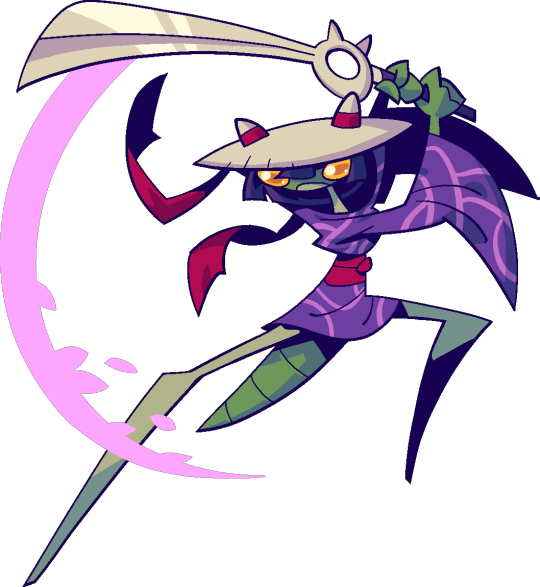
Shear, the Wind that Cuts, is a Reiken'O, a tribe of mantis-like creatures living deep in the Frostfang Mountains. The Reiken'O lead an austere existence, following a strict set of laws laid out centuries ago by their ancestor, Hurricane, the Wind of Destruction.
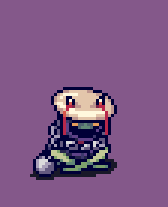
The game begins with Shear on the eve of her own ritualistic suicide. Since her mating ritual bore no fruit, she has upset the balance between life and death. However, she sees visions of the headless corpse of her Eternal Mate, pointing to the village's exit.
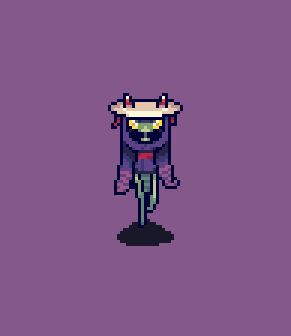
Shear leaves her village in order to find meaning in a world of death and to shatter the chains of tradition her people have shacked her with. However, the Reiken'O must reclaim the balance of life and death. They will not let her go easy.

In combat, while Shear has the use of some magic of the mountains, she is mainly a physical attacker, quickly and efficiently dispatching her foes with her blade, Ice Dragon Nail.
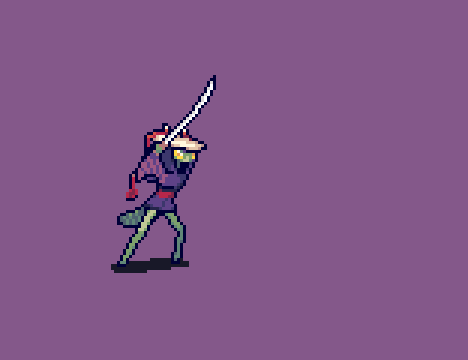
Since she's a trained Reiken'O blademaster, if Shear uses her techniques in a specific order, they will gain new, devastating properties. She's an expert warrior who does well in normal encounters and becomes an absolute monster in a prolonged encounter.
Want to experience Shear's story? Support Hymn to the Earless God on Kickstarter!
221 notes
·
View notes
Text
The lesbian love confession in a girl's band show is an incredibly powerful move that is very hard to fully charge up, usually taking up the majority of the episodes (though some may throw out a weaker version that can't make a dent in their opponent's guard, or simply one that they cancel into the "quirky bestie joke" move since that is a lot harder to punish).
Despite the obvious catharsis of landing it on a girl's beloved and watching her defenses shatter as her world is rocked by this value-altering impact, the love confession is also dangerously easy to whiff, and also requires careful positioning so as to avoid knocking your target so far off their feet that they land out of reach of your "stay with me forever" combos, since the "so, about our conversation last night" chain is far less effective and can easily be dodged out of by an astute friendzoner. A band lesbian's use of this dangerous and occasionally forbidden technique reveals a great deal about her mastery of lesbian music as an art form, as well as the ways in which she expresses herself within the rules of her particular homosexual combat system.
The characters of Ave Mujica are adept practitioners of these arts, and have been known to deftly launch and land their confessions on each other at crucial points. Sadly, the world of Ave Mujica is not a fighting game, but an RPG, and one with particularly binding roles to boot. A girl builds her powers up. She bides her time. She launches her ardent appeal, moving with what she feels to be the force of destiny itself, stringing in fluent inputs those words that she hopes shall win over her beloved's heart. She succeeds. The confession lands. It strikes hard, ten times as hard as any earlier declaration she'd made. It is a thing of beauty, gorgeous in the moment and grand in the labors that led up to it.
The gauge shifts, marginally. The conviction of her beloved to some strange and shadowy cause, the health of her peculiar destined disease, registers a decrease. From a million to 999000 and change. It was the best shot she could land. But in this economy of sinister oaths, love is just one among a million desires. Even those that are weak to it shall not be toppled at a blow, for their bodies are reinforced by countless hours of hate and pain and emptiness, entirely too staunch to believe in something as silly as a happy tomorrow.
This is not a place for moments of brilliance. The currency of Ave Mujica is eternity. And these girls have spent a lifetime and more believing that they shall never, ever be loved.
16 notes
·
View notes
Text
How to use Martial Arts in your TTRPG
Elevate your tabletop RPG battles with martial arts techniques! 🌟 Our latest video shows you how to integrate thrilling combat moves into your game sessions. 🎲Ready to level up? #RPGCombat #TabletopGaming
Ninjas & Superspies Embrace the path of the warrior with our comprehensive guide on integrating martial arts into your tabletop RPG. This video illuminates the seamless ways to weave hand-to-hand combat and philosophical teachings into your game’s fabric, enhancing the depth and realism of your characters’ experiences. Whether you seek the balance of aikido or the ferocity of muay thai, this…
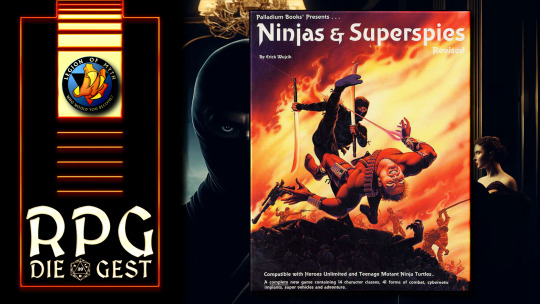
View On WordPress
#character skills rpg#legion of myth#martial arts in gaming#martial arts rpg#megaverse campaigns#megaverse settings#ninjas & superspies#ninjas and superspies review#ninjas in rpgs#Palladium Books#Palladium Fantasy#palladium game tutorials#palladium megaverse#palladium rpg strategies#Palladium universe#role-playing game guides#role-playing games#rpg character development#rpg combat techniques#rpg game design#rpg game mechanics#superspies game#tabletop combat#tabletop gaming tips#tabletop RPG
1 note
·
View note
Note
I just wanted to let you know that I just found your tumblr within the past week and you have immediately become my 2nd favorite tumblr, being only behind Blogatog. Love your ttrpg takes.
Anywho, you said to ask about flags, so what is your biggest/are your biggest red flags when it comes to ttrpg design?
thank you! i'm glad you enjoy my silly little posts. anyways i think my biggest red flag is unintentionality--the feeling that the writer of a TTRPG has done something by 'default', the inability to put myself in their shoes and understand (or even better, be told by the text itself) the reason why a particular decision has been made.
one of the biggest places this rears its head is in terms of tone and voice. let me quote jay dragon's really good the storyteller technique:
Another advantage of getting to know the narrator of your RPG is that it helps mitigate unconscious bias in your design. Dungeons & Dragons has a notably anthropological narrative voice, explaining other cultures and creatures like a scientist in the field. The language of D&D mimics the writing style of mid-century scientists traveling to “exotic” locations and cataloging non-Western experiences as part of a documentation of the Other. It’s easy for newer designers to want to “write a game like D&D” without regard for how even the narrative voice of Dungeons & Dragons carries unintended political baggage. Is a bird’s-eye and judgemental perspective really the energy you want to bring to your whimsical fantasy world? Or is there another perspective within your world that can be more useful, and allow you to find new perspectives on the world you’ve created.
narrative tone is a choice--the attempt to use a 'neutral' tone for rules text and description is also a choice, how formal and how informal you get with it is a choice, and when i read a text that seems to have made that choice thoughtlessly it imo bodes very poorly for the rest of the game.
other examples of this kind of unintentionality are games that have a comabt system despite not being about combat in any way--games with equipment rules despite them not setting out to tell the sort of story where which sword or gun a character has matters--games that measure themselves in exact distances without actually using a battlemap--&c.
while most of this unintentionality takes the form of 'falling back onto what DND does' because DND is the market leader and many people's first TTRPG, so imitating it without purpose is something that both cynical market-share chasers & unexperienced designers without a wide range of expereicne can do--it's absolutely not unique to it. one form of unintentionality i see a lot in indie TTRPG circles is creating far more Moves for your PBtA game than necessary--clearly more out of a sense that 'AW/MotW/Masks has a Move for this' than any specific understanding of what that move will do in your game
in game design--as in any art--there is no such thing as a 'neutral' choice or a non-choice. there are only choices, and how much someone's thought about these choices is important!
364 notes
·
View notes
Note
What do you think about trying to run tournament arcs in tabletop RPGs? Every tabletop blogger I follow always has something super interesting to say about the premise.
Tournament arcs obviously kick ass and are one of the greatest forms of storytelling, but there are a few issues with them in the context of TTRPGs that are not impossible to overcome but should be recognized.
First of all, most TTRPGs don't really model one-on-one combat too well. Since the focus in most RPGs is on some kind of group of guys going up against other groups of guys, their rules tend to be abstracted to a degree for the sake of making the resolution of multiple participants' actions quicker. In addition to this, they are often balanced with multiple characters in mind, so reducing both parties to just one character will inevitably affect how good the action feels.
The issue with most traditional TTRPG combat engines for the sake of the sort of combat that tournament arcs almost demand is that they're basically solved equations. You have two sides with numbers and you have them throw their numbers at each other until the other side runs out of numbers. What a one-on-one combat system that makes for dynamic combat almost necessitates is that characters have multiple available options which they can choose between from round to round, and which all have potential counters. In most TTRPG combat systems (because they're either concerned with group combat or not interested in modeling the type of combat spectacle you often get in tournament arcs) combat ultimately boils down to two sides making actions without caring about what the other side is doing. It doesn't matter if the goblin attacked last round, Gronar is still going to be attacking back.
So, either finding a system that natively supports it or modifying your current system to better support one-on-one combat. After that you've got another hurdle to overcome: how do you keep everyone engaged while just one (or at most two) player's character is in the ring? Well, you could take a page from World Wide Wrestling and have the other players' characters do color commentary. I mean, that's what they often do in the animes. Have the characters go like "The God-Killing Fist Technique? But it's one of the forbidden styles!!!" And so on. Point is, while the focus should still be on the guys fighting in the ring, you want to sometimes swing the spotlight around to showcase everyone else's reactions or even have a little B-plot going on outside of the ring! If you do decide to go for a whole B-plot, it should not be something that requires blow-by-blow resolution, because the focus should still be on the guys in the ring doing the fighting, so cutting into the B-plot should be the sort of thing where you and the players whose characters are involved in the B-plot can just have a brief exchange in between bouts, maybe one or two checks at most, and then we're back to the battle.
Once you do that you're sure to have a hell of a good time, because as stated: tournament arcs kick ass. Also, thinking about detailed one-on-one combat systems made me realize that Chainmail, which was by default assumed to be used as the combat system for 0D&D, did have separate systems for jousting and duels. So, like. In the context of D&D, the idea of separate systems for running more granular, zoomed-in combat is lost technology.
48 notes
·
View notes
Note
Is it possible to use Eureka in a more traditional fantasy setting, more sword and sorcery? What about a fantastical medieval city from the time period of the rise of universities in Europe?
Very much appreciate all the posts. It's made me think more carefully about table top gaming than I had before.
Well, maybe, but I wouldn’t recommend it.
There’s quite a lot in Eureka: Investigative Urban Fantasy that sets it very firmly in the tech level and societal structure of the past 200 years. It is designed to be flexible, but I don’t know that it’s flexible enough to handle that without a lot of things starting to break.
A lot of the Skills and Traits would be less applicable to medieval life and culture and so more than just the Driving Skill would need to be swapped out.
Eureka’s combat rules, which are pretty intricate, are focused primarily on firearms that use modern cartridges rather than ramrod muzzle-loading type firearms when it comes to ranged fighting, and on much smaller melee weapons and unarmed fighting when it comes to close range fighting.
We don’t even have bow&arrow rules.
Many of the intricate firearm combat rules would not be applicable to black powder weapons, and if I were to do a version of Eureka set in a medieval setting, I would want to flesh out the melee combat a whole lot more, both because it would be used more often, and because the current melee combat rules are designed specifically to emulate how people fight today.
The average person today, even if they know how to fight, only knows any advanced techniques when it comes to unarmed fighting, and then maybe a few of the basics of using weapons. Back when swords and daggers and stuff were much more commonly used weapons, much more advanced techniques were known by people who fought with them, and I would want to reflect that in the rules.
Plus, there’s the matter of culture. Eureka is an extremely modern game, exploring very modern themes and having rules that guide the characters into acting like real modern people. Any version of Eureka which takes place in a society in or based on the more distant past would have to reflect that in the rules, and, well, that would be a whole lot of research.
If you were to just try to graft some of Eureka’s mystery-solving mechanics onto an existing sword&sorcery TTRPG, that might work better, but you’d still run into problems. The Investigation Point mechanic works the way it does because all the Skills for investigating are on a Eureka PC’s character sheet. These Skills are not part of most sword&sorcery RPGs, so you’d have to homebrew those in too, or the means of getting Investigation Points would be very limited and not flow correctly.
Also, you’re welcome! That’s one of our ultimate goals here, to get people to think of game design as being real enough to actually affect gameplay experience, and a real skill that can be developed and applied with intent.

#eureka: investigative urban fantasy#eureka#eureka ttrpg#ttrpg tumblr#ttrpg community#indie ttrpg#rpg#ttrpg#ttrpgs#ttrpg design#sword & sorcery#d&d#d&d 5e#dungeons and dragons#dungeons & dragons#dungeons and dragons 5e#advanced dungeons & dragons#ad&d#ad&d 2e#dnd#tsr#adnd
116 notes
·
View notes
Note
Have you played the avatar ttrpg?! I'm interested in it (dnd player) but haven't actually talked to anyone who's played it yet. Seems like a lot of the atla/tlok fandom is just latching onto the lore and worldbuilding haha
Hi!!! I actually run a game for my real life game group! We are also a DnD group so coming from the same background! I have no experience playing it as a PC because I am the GM, but I have a pretty complete understanding of how the game is played and would be happy to talk about it with you!
I love the TTRPG-not just for the lore and worldbuilding (though I LOVE throwing all the details from the rpg books into my fics to flesh out the stories more!!) but the game itself is very interesting and fun!!!
I'm not sure what all you would like to know, feel free to send me asks with more specific questions, but I'd be happy to kind of illustrate what the game is like and how it's different from DnD!
First of all, the TTRPG uses a different system than DnD. If you aren't familiar with different types of RPGs, you might take a moment to read about the "Powered by the Apocalypse" system. The main differences between DnD's d20 system and the PbtA system, is that PbtA uses 'moves' to influence roleplay and focuses more on the storytelling than the crunchy math and mechanics.
In Avatar Legends, like most PbtA games, you only use 2d6 for your rolls. You have modifiers, but they are smaller numbers than you might be used to for dnd. This makes the math a lot easier! if you get a 6 or lower, it's a 'miss'. If you get a 7-9, it's a 'weak hit' and a 10+ is a strong hit. But it diverges massively from DnD in that a 'miss' doesn't always mean you don't do the thing you're trying to do! depending on what move you are rolling, you might just cause the story to veer off on an unexpected path!
In DnD, usually your rolls influence only what your character succeeds at doing or fails at doing-you can basically roleplay your character to do whatever you want (within reason) and the dm will have you roll and tell you whether you do it successfully or not.
in Avatar Legends TTRPG, however, there are many things that actually influence how you roleplay your character-for example, you have 'conditions' such as 'Angry', which imposes a penalty to some of your rolls, and in order to get rid of that condition, your character must 'break something important or lash out at a friend'.
There are many other fun mechanics in the game, such as 'balance', in which each pc has two principles they must maintain balance between or else risk going 'off balance' and taking a drastic action. There's also a more crunchy combat mechanic call 'combat exchanges' in which you can use combat techniques, but it's more fast paced than the DnD combat system and doesn't involve lots of turn-taking and lengthy rounds of combat.
These types of mechanics really lend themselves to the collaborative storytelling element of the game. it prioritizes roleplay above the numbers.
I LOVE this illustration of how it works by using Wu's kidnapping:
When you make a character, you'll choose one of the 'playbooks' available (basically this is your class). Each playbook has two principles that sort of oppose one another. Your character must maintain balance in their actions, and if they start shifting too far toward one principle or the other, it will throw them off balance, causing them to take a drastic action in like with that principle. The playbooks also have certain moves that you take that are unique to the playbook, like "the elder" has move called "cut the garbage" that lets you ask extra questions when talking with a character who might be lying or obscuring the truth.
Basically, the game is different from DnD, so if you decide to jump into it with your game group, be sure to approach it without preconceived ideas about how to play it like DND.
I had never really run a TTRPG before I started GMing avatar. I was really nervous when I started. But my game group is great and we were all patient with each other as we learned the game.
There's videos of people playing if you want to kind of see the mechanics in action, especially this one that features Dante Bosco and Jennie Kwan.
youtube
Well I don't know if that is what you were looking for but please feel free to ask more specific questions about the game if you like! I'm going to a gaming convention this year and I'll hopefully be signing up to play the game as a PC there.
10 notes
·
View notes